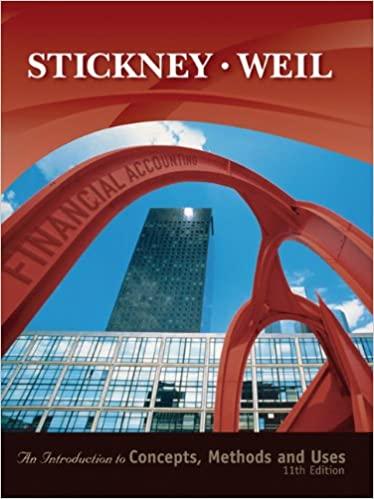Preparing and interpreting the statement of cash flows using a columnar work sheet. The accounting records of
Question:
Preparing and interpreting the statement of cash flows using a columnar work sheet.
The accounting records of The GAP, a clothing retailer, for Year 6 and Year 7 indicate the following changes in its balance sheet accounts (amounts in millions):
Year 6 Year 7 Cash $ 94 Decrease $428 Increase Marketable Securities (current asset) 46 Increase 46 Decrease Merchandise Inventories • 96 Increase 154 Increase Prepayments 1 Increase 56 Increase Property, Plant, and Equipment (at cost) 372 Increase 466 Increase Accumulated Depreciation 215 Increase 270 Increase Other Noncurrent Assets 51 Increase 15 Increase Accounts Payable — Merchandise Suppliers 114 Increase 134 Increase Notes Payable to Banks (current liability) 18 Increase 45 Increase Income Taxes Payable 26 Increase 7 Decrease Other Current Liabilities 90 Increase 123 Increase Bonds Payable — 577 Increase Common Stock 360 Decrease 524 Decrease Retained Earnings 369 Increase 455 Increase Income statement data for The GAP appear below:
Year 6 Year 7 Sales Cost of Goods Sold Selling and Administrative Expenses Income Tax Expense Net Income
$ 5,284 (3,285)
(1,250)
(296)
$ 453
$ 6,508
(4,022)
(1,632)
(320)
$ 534
a. Prepare a columnar work sheet for the statement of cash flows for Year 6 and Year 7 (see the upper panel of Exhibit 4.4 for the desired format). The GAP sold marketable securities during Year 7 at their book value (that is, at no gain or loss). The firm did not sell property, plant, and equipment during either year. Treat changes in other noncurrent assets as an investing activity.
b. Prepare a statement of cash flows for Year 6 and Year 7 using the indirect method for computing cash flow from operations. The balance in cash was $486 at the end of Year 6 and
$914 at the end of Year 7.
c. Compute cash flow from operations for Year 6 and Year 7 using the direct method (see the lower panel of Exhibit 4.4 for the desired format). The GAP includes depreciation in selling and administrative expenses. Your analysis should show how much cash The GAP collected from customers and how much cash The GAP paid to mcichandise suppliers, to governments for income taxes, and to other providers of goods and services.
d. Comment on the pattern of cash flows from operating, investing, and financing activities.
Step by Step Answer:

Financial Accounting Introduction To Concepts Methods And Uses
ISBN: 9780324222975
11th Edition
Authors: Clyde P. Stickney, Roman L. Weil





